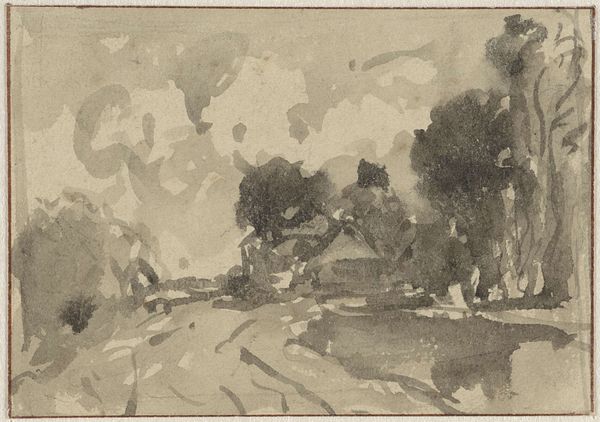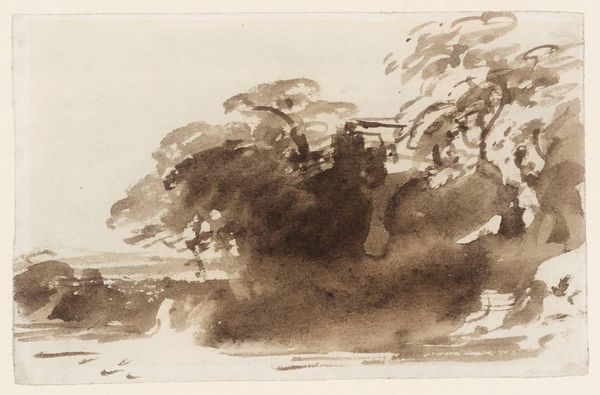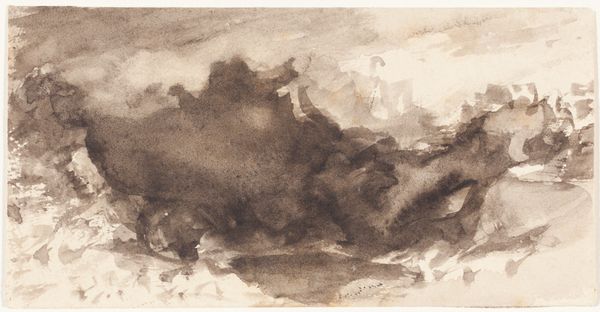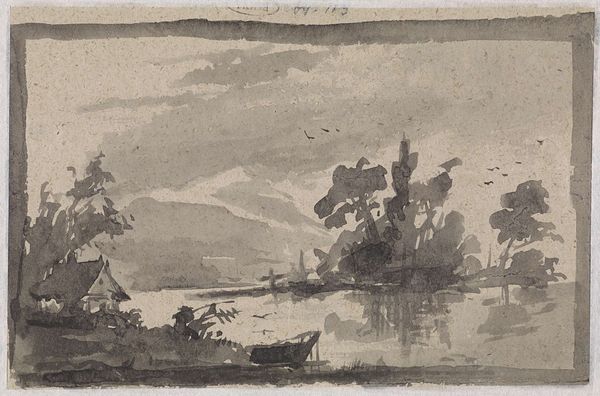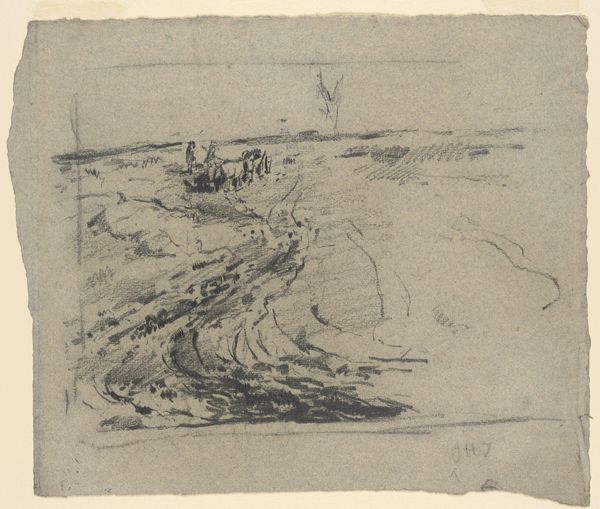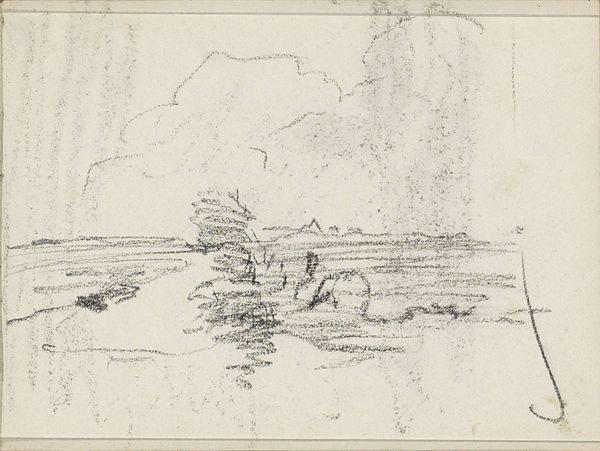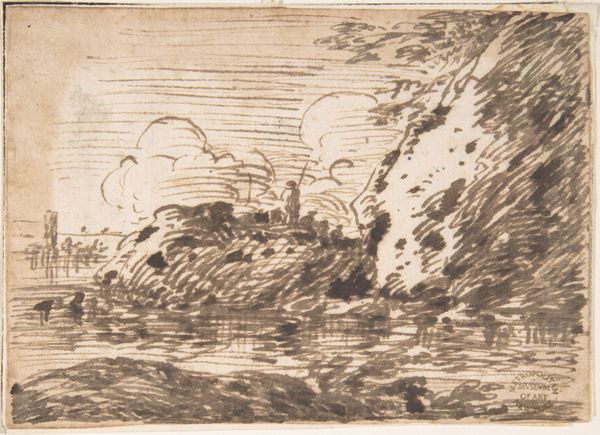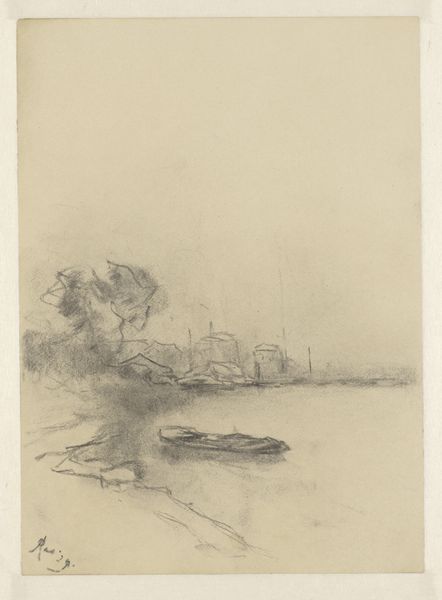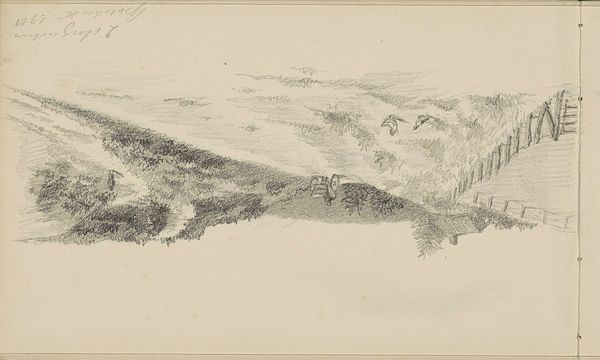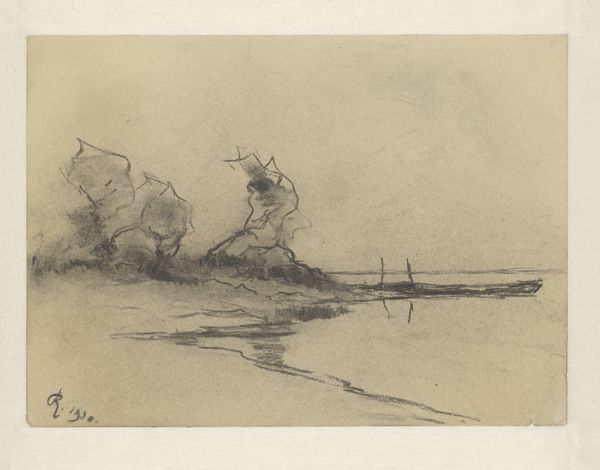
Dimensions: support: 91 x 131 mm
Copyright: CC-BY-NC-ND 4.0 DEED, Photo: Tate
Curator: Here we have John Varley's small, evocative watercolor entitled "A Blot. Trees over a Lake," part of the Tate Collection. Editor: It's a quiet piece. The ink wash gives it a sort of dreamy, half-remembered quality, like a fleeting impression. Curator: Varley, active in the early 19th century, was influential in the development of watercolor techniques, emphasizing directness and simplicity. He aimed to capture the essence of a scene rather than meticulous detail. Editor: It's funny how such an unassuming little sketch can still convey such a strong sense of atmosphere and place. I feel like I'm there, listening to the water. Curator: It underscores how artistic intent and the public role of art can prioritize subjective interpretation over photographic realism. Editor: Exactly. It's a reminder that art isn't just about what you see, but how it makes you feel.
Comments
tate 7 months ago
⋮
http://www.tate.org.uk/art/artworks/varley-a-blot-trees-over-a-lake-t09294
Join the conversation
Join millions of artists and users on Artera today and experience the ultimate creative platform.
tate 7 months ago
⋮
Varley painted many small, imaginary landscape sketches from the late 1830s onwards, and it is most likely that this drawing dates from this period. He advocated simplifying compositions, and the 'blot' method devised by Cozens was a particularly useful way of achieving this. He was very adept at the use of flat washes and this has been taken to extremes in this landscape 'blot'. A very wet ink was quickly put down in the central trees with a fully loaded brush. A drier brush was used for the surface of the lake. Gallery label, August 2004
